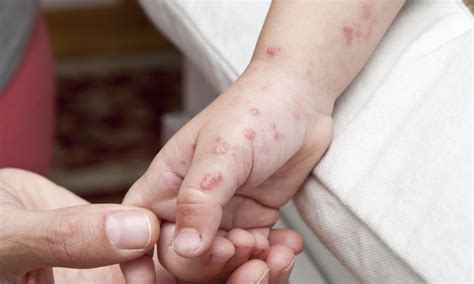Intro
Shingles, a viral infection caused by the varicella-zoster virus, is often associated with adults, particularly those over the age of 50. However, children can also contract shingles, although it is relatively rare. When children do develop shingles, it can have a significant impact on their daily lives, from physical discomfort to emotional distress. In this article, we will explore five ways shingles can affect children and what parents and caregivers can do to help manage the condition.

1. Physical Discomfort and Pain
One of the primary ways shingles affects children is through physical discomfort and pain. The rash associated with shingles can be itchy, burning, and tender to the touch, making it difficult for children to sleep, eat, or engage in everyday activities. In some cases, the pain can be severe, leading to irritability, mood swings, and restlessness. Parents and caregivers can help alleviate their child's discomfort by applying cool compresses, giving over-the-counter pain medications, and keeping the affected area clean and dry.
Managing Shingles Pain in Children
- Apply cool compresses to the affected area to reduce itching and burning sensations
- Give over-the-counter pain medications, such as acetaminophen or ibuprofen, under the guidance of a pediatrician
- Keep the affected area clean and dry to prevent infection
- Encourage children to rest and avoid strenuous activities

2. Emotional Distress and Anxiety
Shingles can also affect children emotionally, leading to anxiety, fear, and stress. The discomfort and pain associated with the rash can be overwhelming, causing children to feel anxious about their appearance, social interactions, and daily activities. Additionally, the uncertainty surrounding the duration and severity of the condition can exacerbate emotional distress. Parents and caregivers can help alleviate their child's emotional distress by providing reassurance, support, and open communication.
Supporting Children's Emotional Well-being
- Provide reassurance and support to help children feel secure and comforted
- Encourage open communication to address concerns and fears
- Offer distractions, such as games, books, or movies, to take their mind off the discomfort
- Foster a positive body image by focusing on the child's strengths and abilities

3. Social Isolation and Stigma
Shingles can also affect children socially, leading to feelings of isolation and stigma. The visible rash can make children feel self-conscious about their appearance, leading them to avoid social interactions, school, or extracurricular activities. Additionally, the fear of infecting others can lead to social isolation, further exacerbating emotional distress. Parents and caregivers can help mitigate social isolation by educating others about shingles, promoting understanding and empathy.
Reducing Social Isolation and Stigma
- Educate family, friends, and teachers about shingles to promote understanding and empathy
- Encourage children to participate in activities that bring them joy and comfort
- Foster a sense of community and connection through online support groups or forums
- Emphasize the importance of inclusivity and acceptance

4. Impact on Daily Activities
Shingles can also affect children's daily activities, from school to extracurricular activities. The discomfort and pain associated with the rash can make it difficult for children to focus, participate in activities, or complete homework. Additionally, the need for rest and recovery can lead to missed school days, further impacting academic performance. Parents and caregivers can help minimize the impact on daily activities by working with teachers, providing accommodations, and promoting flexibility.
Accommodating Children's Needs
- Work with teachers to provide accommodations, such as modified assignments or flexible deadlines
- Encourage children to take breaks and rest when needed
- Provide a comfortable and supportive environment for learning and recovery
- Foster open communication with teachers and school administrators

5. Long-term Complications
Finally, shingles can also affect children in the long term, leading to complications such as postherpetic neuralgia (PHN), a condition characterized by persistent pain after the rash has healed. In rare cases, shingles can also lead to more serious complications, such as bacterial infections, pneumonia, or encephalitis. Parents and caregivers can help minimize the risk of long-term complications by seeking medical attention promptly, following treatment plans, and promoting healthy lifestyle habits.
Preventing Long-term Complications
- Seek medical attention promptly if symptoms persist or worsen
- Follow treatment plans and take medications as prescribed
- Promote healthy lifestyle habits, such as regular exercise, balanced diet, and adequate sleep
- Encourage children to practice good hygiene and avoid close contact with others who may be at risk

In conclusion, shingles can have a significant impact on children, from physical discomfort and pain to emotional distress and social isolation. By providing support, accommodations, and promoting healthy lifestyle habits, parents and caregivers can help alleviate their child's symptoms and minimize the risk of long-term complications. If you suspect your child has shingles, seek medical attention promptly to ensure prompt treatment and prevent potential complications.
What are the symptoms of shingles in children?
+Common symptoms of shingles in children include a painful rash, itching, burning, and blistering. Children may also experience fever, headache, and fatigue.
How is shingles treated in children?
+Treatment for shingles in children typically involves antiviral medications, pain relief medications, and cool compresses to reduce itching and discomfort.
Can shingles be prevented in children?
+While shingles cannot be completely prevented, vaccination against varicella (chickenpox) can reduce the risk of developing shingles. Additionally, practicing good hygiene and avoiding close contact with others who may be at risk can help minimize the risk of transmission.
